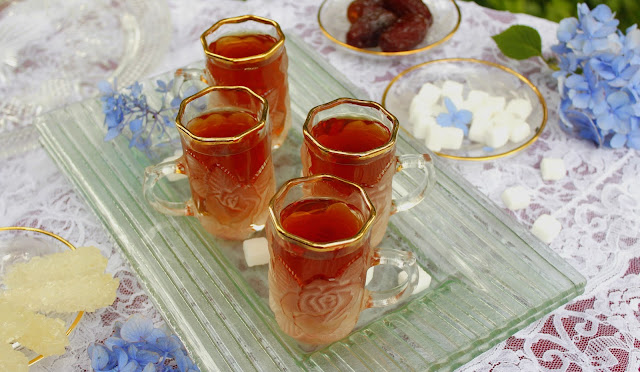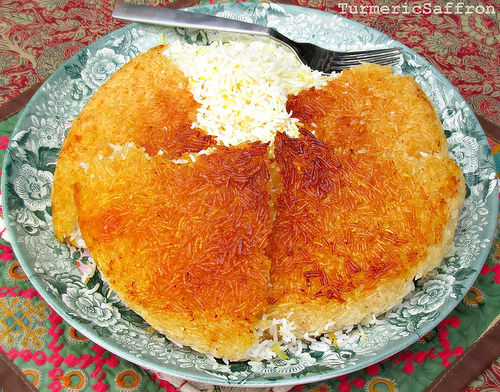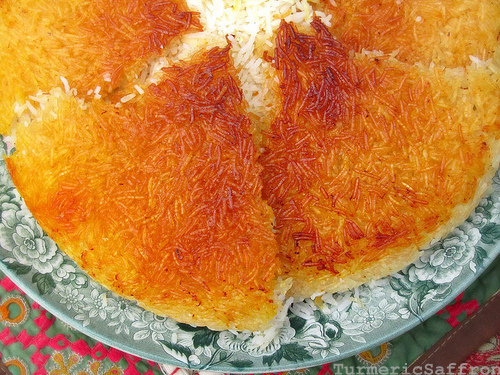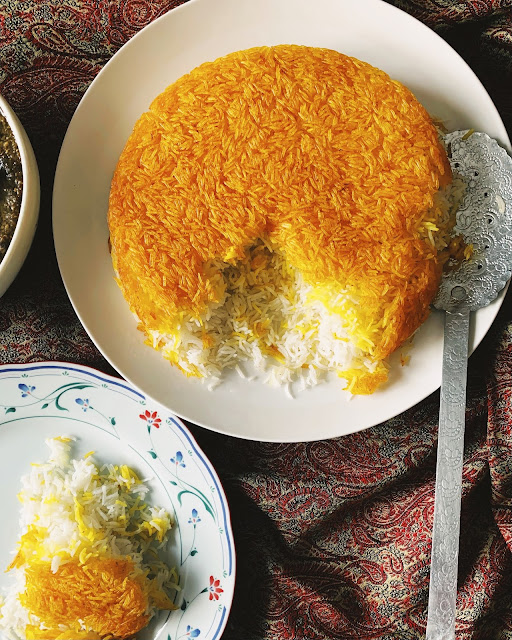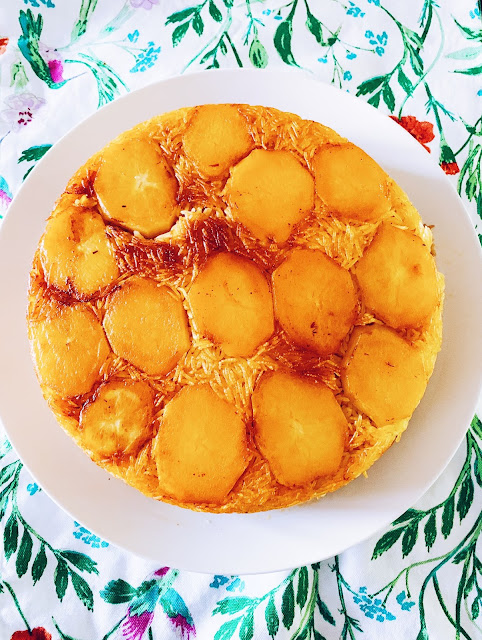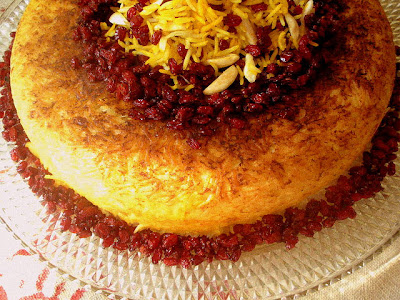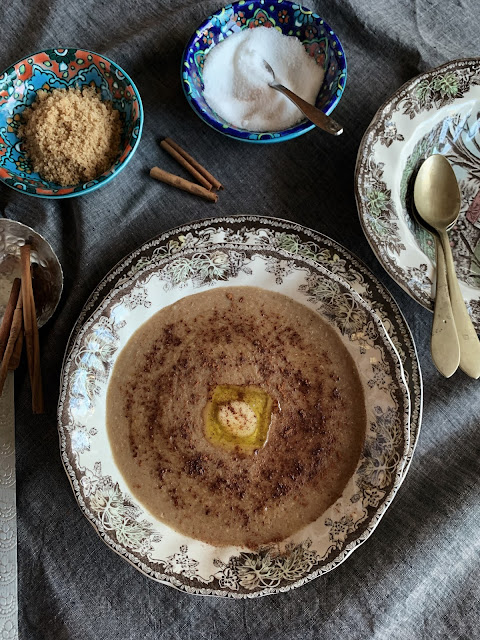The history of tea dates back to the late 15th century. Before that coffee was the main hot drink in our country. Coffee houses (ghahveh khaneh) were built on the side of roads, as resting places for travelers. They would be served some food and a chance to take a break for awhile before heading out to their destinations. The name "coffee house" (ghahveh khaneh) still remains to date even though they mainly serve tea.
To brew a perfect Persian style tea, you need a good quality long, loose leaf black tea.Using a porcelain or china teapot is recommended. The teapot should have several tiny holes inside where the spout is located which works as a strainer. Also, you need a kettle not only to boil the water but to serve as a stand for the teapot while the tea is brewing on the stove. Using an electrical samavar, if you happen to have one, is the best option. Samavar was brought to Iran in the 18th century from Russia.
- Fill the kettle with fresh cold water and bring to a boil. As soon as the water comes to a boil, warm up your teapot by rinsing it with some hot water from the kettle.
- Place 2 tablespoons of tea into the teapot. Don't use any tea holders inside the teapot. If you buy your tea in bulks from outdoor vendors, you may want to also give your tea a gentle rinse with water to get rid of the possible dirt and dust.
- Pour water into the pot over the loose tea leaves. Fill it nearly to the rim and put the lid back on.
- Place the pot on the kettle in a secure position. It should fit well on the kettle. Allow it to brew for at least 10-15 minutes on medium to low heat.
- Rinse inside the cups with hot water.
- Gently pour tea into glass cups to prevent it from making a lot of bubbles. Depending on how strong or light you might like your tea, adjust it using the boiled water in the kettle. It is a good practice when serving a large group of guests to have a tray with both light and dark tea.
1 tablespoon of rosewater (golab)
2-3 green cardamom (hel) pod opened
2 small sticks of cinnamon (darchin)
You may serve chai with sugar cubes, dates, raisins or other sweets. However, for those serious tea drinkers, adding sugar, milk or anything else would take away from the taste.
There's also the etiquette of serving the eldest and the ladies first as you are making rounds. Make sure there are no spillage on the tray either. That's the lesson I learned early on in my life when I was only ten years old. One day, my mother handed me a tray with several full cups and told me to take it outside and offer them to the guests sitting in the garden. Before I could get any further some tea spilled due to my shaky hands. She wiped the tray, filled up the cups and told me: "Look, you should be able to dance ballet and carry a tea tray at the same time without spilling a drop." The memory of that day is still fresh in my mind!
I like my tea dark and a little bit on the bitter side with no sugar, milk or lemon. How do you like your tea?
Samavar photo credit, Here.
.
Enjoy!





